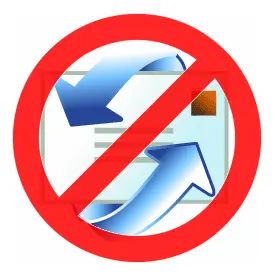Export Blocked Senders in Outlook Express
Outlook Express allows you to keep a list of unwanted e-mail addresses. This list of blocked addresses is used to filter incoming e-mails, helping you in the battle against spam and junk e-mail. During your use of Outlook Express, you probably added quite a few unwanted e-mail addresses, so the blocked senders list can be large. If you need to reinstall Windows for some reason, you will lose the blocked senders list. A fresh installation of Windows will also reinstall Outlook Express and the list of blocked senders will be empty again. Not very handy of course, so it would be better if you can make a backup of the list and import it into your new installation of Windows. To do this you need to export blocked senders.
The list of blocked senders is not actually stored in Outlook Express itself, but in the Windows registry. And there is a way to make a backup of the blocked senders list which can be restored in the new copy of Outlook Express.
Follow these steps to export the blocked senders list:
- Start the Widnows Registry Editor.
- From the Windows Start menu, select Run.
- In the Run box, type regedit and click OK.
- In the Registry Editor, locate the following key:
HKEY_CURRENT_USER\Identities\{unique number}\Software\Microsoft\Outlook Express\5.0\Block Senders
- With the key selected, open the File menu and click Export.
- Type a name for the backup file in the Export Registry File dialog and click Save.
- Close the Registry Editor.
- Select Exit from the File menu.
This file needs to be copied to your new Windows installation and imported in the registry. Do take note that the blocked senders list is stored at user level, the {unique number} in the registry key needs to be replaced by the actual identity number of the user. So if you want to export blocked senders for all users on the system, you need to repeat the above steps for each identity number.
You can identify the user from the Username value directly under the {unique number} key. So on your new installation, do a search and replace in the exported (.REG) file to replace the old identity number with the new identity number, before importing the file into the Windows registry.


PS Gerrie: always make sure to make a backup of the registry before changing the registry manually. Just incase anything goes wrong with the editing.
@Gerrie – Normally deleting the address from the Blocked Senders list should do it. It is possible that your registry is corrupt.
Check the registry key mention in the post, and then look for a subkey “Mail” and then “Criteria”. In there you will find subkeys for each address that is blocked, e.g. “000”, “001”, “002”. In each subkey there is a “Value” entry that has the e-mail address.
Check if your incorrect e-mail address is still existing in one of the “000” … “00x” keys and if so, delete the key completely.
Jules
An address accidently got put on the “blocked sender” list. I removed it, however the messages from that address keep get sent directly to the “deleted” folder. I would like to read the messages before sending them to the “deleted” folder. How do I rectify this problem?
Terry,
Answer is the same i’m afraid. The only import that Outlook allows for blocked senders is a simple TXT file listing all the e-mail addresses.
So you still need a way to transfer the Registry export into a flat file.
I also could not find anything useful online, so i’ll ask around if someone has some ideas on how to do this in an easy way.
Thank you for your reply. Is there a way to import the list into Outlook?
Hi Terry,
The structure of the registry export does not allow for an easy extraction into a flat address list.
So copying it into Word would not be possible without running some macros or filters. If you’re handy with Excel, that would be the easier route.
Jules.
I would like to copy the Blocked Senders list from Outlook Express into Word. Any thoughts?
Sincerely,
Terry Holmes